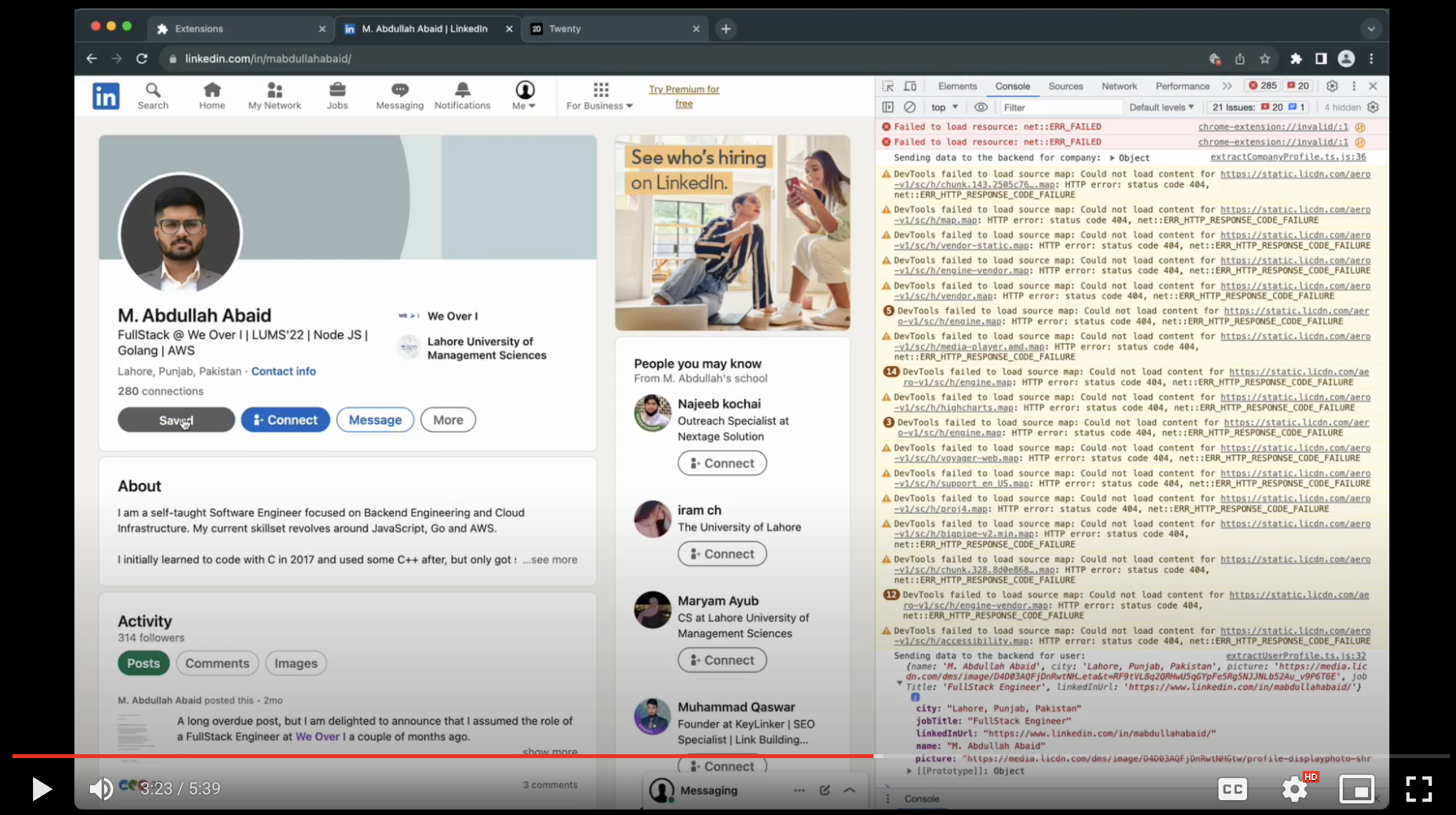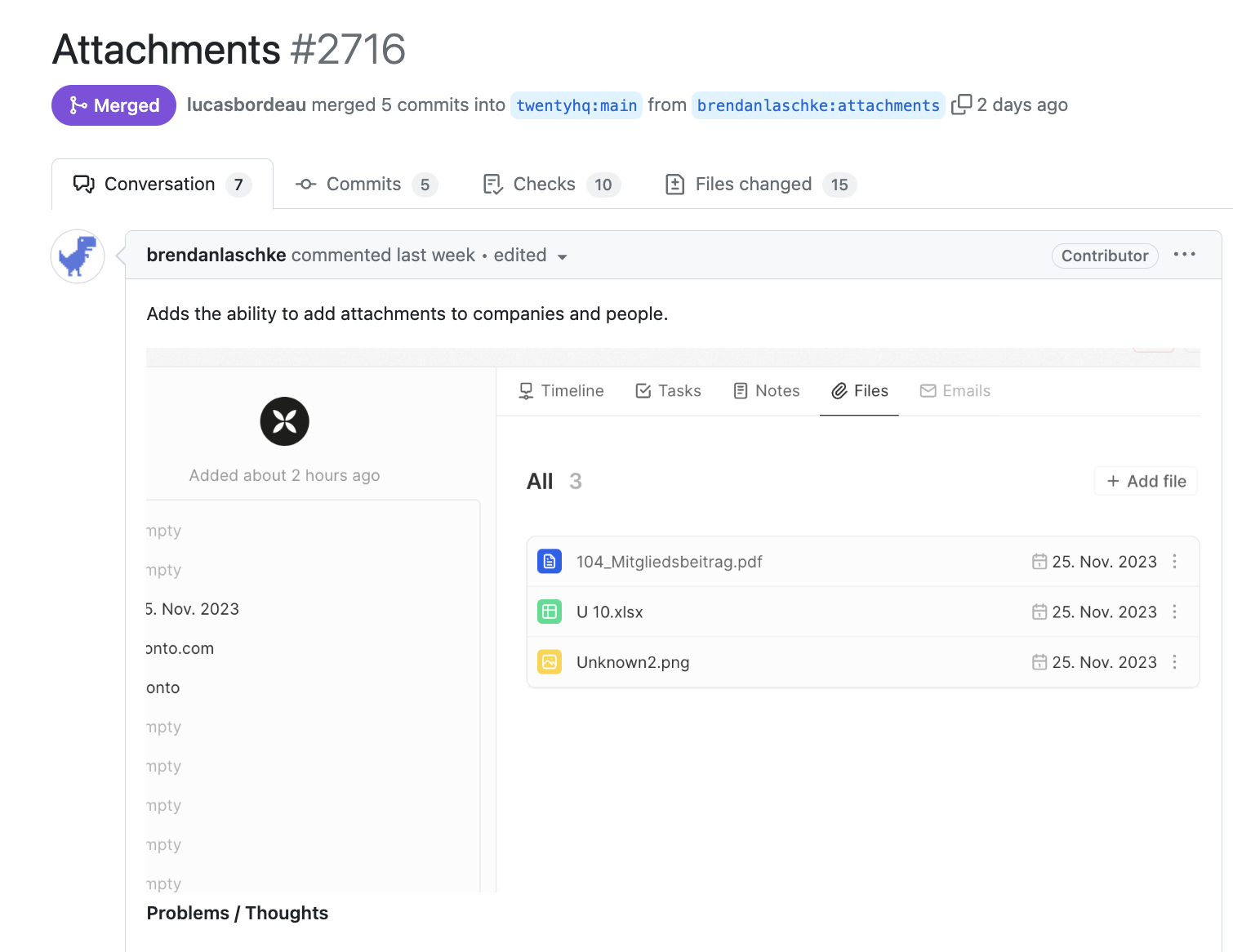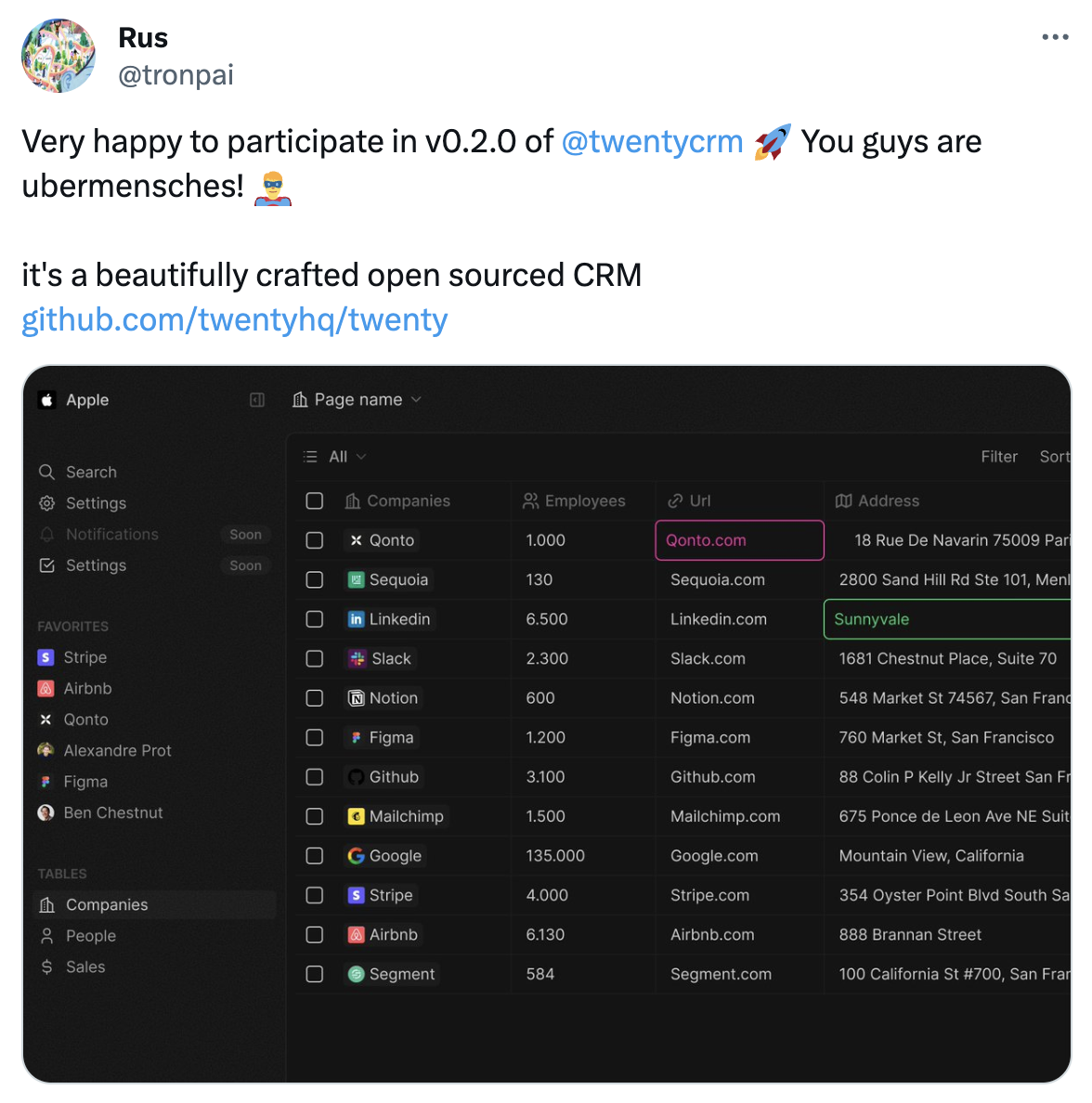In an effort to enhance accountability/transparency, we’re trying out public investor updates.
Starting this month’s update with a screenshot of a video we received. Abdullah is a fullstack engineer based in Pakistan, he started builing a small Chrome extension for Twenty from scratch. The extension enables importing a profile from LinkedIn to Twenty.

Such contributions are our greatest source of motivation. It reinforces our belief that community is the key to meet the diverse needs of users.
Today, those contributions are mostly motivated by goodwill. But I’m looking forward to the day we’ve built an ecosystem and can create economic opportunities for contributors.
🎂 Six months
Yesterday marked 6 months since the incorporation of the company. A startup’s ability to plan is often roughly capped by the time since its inception so now is a good time to talk about the major goal for the next 6 months: building a small community of passionate users.
We want supporters to be not just contributors, but also users. So in order to do this, we will soon paywall the cloud version and focus on a narrow subset of customers that are smart and have hard problems to solve. We will work closely with them and iterate with a single focus on reaching outstanding product usage metrics.
We will continue to grow the community but we will not be focusing on revenue and customer growth during that timeframe.
🏰 What we are building
The last update talking about doing a refactoring a few months after launch raised some eyebrows so I realized it would be good to give an update on our vision.
For a while, we struggled to express why we wanted to be an open source version of Salesforce and not “open source Pipedrive” (sales focus) or “open source HubSpot” (historically a marketing focus).
Like Salesforce, we will never be the best tool for Sales outreach or the best tool for Email marketing. Instead, we want to be the Operating System for applications that rely on customer data. There’s almost a default pattern in B2B SaaS: every startup as it evolves gravitates towards becoming a platform for customer data. Take Salesloft, Gong, Apollo, or even Posthog and Segment. They all started from very distinct verticals but are now expanding into overlapping areas trying to become that customer data platform.
Our approach differs in that we’re doing things the other way around. Instead of targeting a niche use-case at first, we’re focusing on the platform capability early on. That’s because (1) our founding team’s core skill is to do great engineering and product design - not sales, (2) open source brings a community of builders and smart minds that like to be handed with flexible tools rather than pre-fitted solutions.
We’re familiar with one potential target customer because we’re building the tool that we had been looking for at our previous company Luckey. We first wanted to use Salesforce because we felt it was the tool that we would never outgrow - you can shape it, grow with it, even build a whole company on top of it (see: Veeva, nCino). But the user experience and the developer experience felt far from what a young startup wants to work with. The UI was messy and as a developer, I would have to learn a whole new language. There was no “Salesforce for startups” and we ended up having to build our own in-house solution.
📍 Product Roadmap
Step 1 of the plan was to build a good generalist Sales CRM that:
- we would be proud to recommend to our friends at seed-stage startups
- would be the best amongst all existing open source solutions We still lack basic building blocks such as logging emails but we expect that we should be in a good position to complete that goal by end of March.
Step 2 will be to become the source of truth for companies’ customer data. Most CRM have a big PLG component and relatively low-friction onboarding. We don’t think that would work well for us. CRM is a complex product that involves data modeling and you can’t expect inexperienced users to get the full value independently. So it may sound counterintuitive but we’ll add more frictions to onboarding process and prioritize features that allow us to get more data into the CRM. You’ve got Stripe receipts? A Postgres database? Calendar events? Segment data? We want you to be able to access everything in one place. And you shouldn’t have to ask your data scientist to build an ETL pipeline for that.
Step 3 will be to become multi-product. This will come earlier than for most companies. I discussed cool ideas with some of you and it’s tempting to take that direction beforehand. There are so many things we would love to build and that could drive Github Stars / Twitter Likes, especially in AI. But we realized that this kind of product is only as powerful as the data and APIs it has access to. We will remain focused on the ‘boring’ foundations because giving those powers to an AI later on is what will create valuable business use-cases.
Step 4 will be to become a development platform.
💙 More from the community
I picked Abdullah’s contribution as an example, but there are so many other examples of exceptional contributions. Here’s another one from Brendan, an engineer based in Germany who’s been our most prolific contributors.

And some recent tweets:


